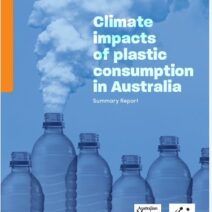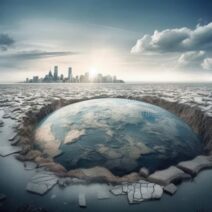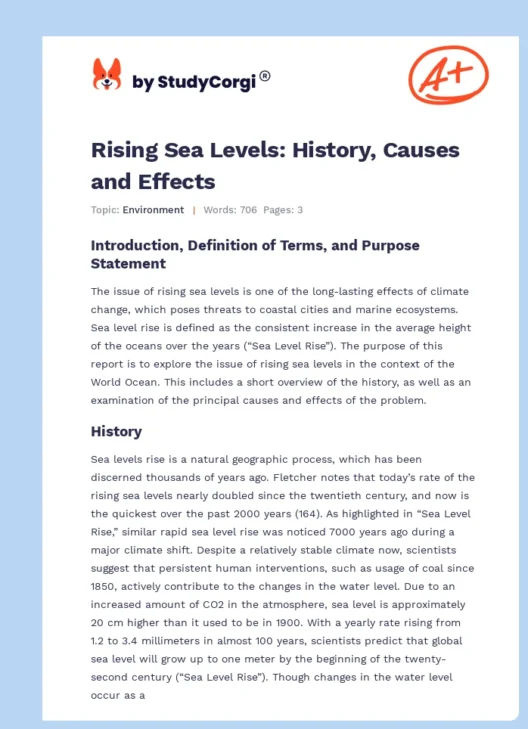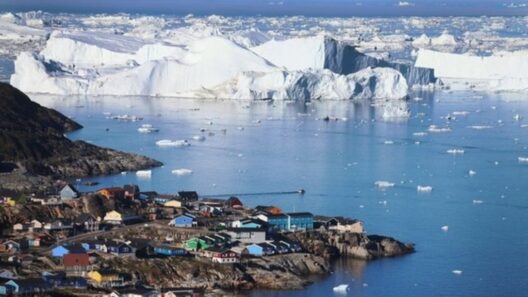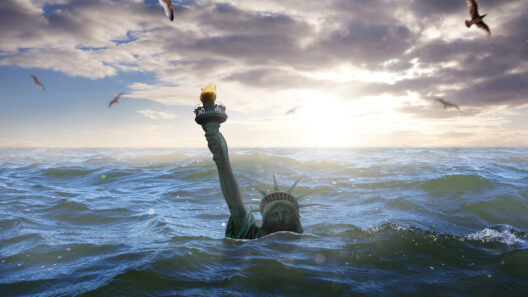Sea levels are not static; they ebb and flow in response to a myriad of natural and anthropogenic factors. In recent decades, however, we have witnessed an unprecedented rise in ocean levels, a phenomenon that alarms scientists, environmentalists, and coastal communities alike. Understanding the mechanics, causes, and repercussions of rising sea levels is crucial for grasping the broader narrative of climate change and its far-reaching impacts on human civilization and natural ecosystems.
To appreciate the intricacies of rising ocean levels, one must delve into the defining features of this phenomenon. Broadly, sea level rise can be classified into two interlinked categories: thermal expansion of seawater and the melting of ice masses. Both are tied to global temperature increases, shedding light on how closely intertwined our actions are with the delicate balance of Earth’s climate.
As global temperatures rise, the oceans absorb approximately 90 percent of this excess heat. This thermal expansion causes water to occupy more space, which in turn results in higher sea levels. In regions where the oceanic heat has been particularly intense, the impacts can be strikingly pronounced. This physical alteration of water volume might seem abstract, but its ramifications are vividly tangible—more frequent flooding, destructive storm surges, and an increased saltwater intrusion into freshwater ecosystems are just a few consequences.
The second major contributor to rising sea levels is the melting of ice sheets and glaciers, particularly in Greenland and Antarctica. These colossal ice structures hold a significant portion of the Earth’s freshwater reserves. As temperatures rise, they melt and transform into water, adding to ocean volumes. The meltwater from these shrinking ice sheets is often quickened by feedback loops—wherein the decrease in ice cover leads to less sunlight being reflected away (a natural cooling mechanism), further accelerating melting. The sight of massive icebergs breaking away from glaciers creates a dramatic narrative within the broader story of climate change, but the implications extend beyond aesthetic appeal; they translate into existential threats for millions of people living in vulnerable coastal regions.
One of the more profound and unsettling effects of rising sea levels is the loss of habitable land. Coastal cities, often celebrated for their cultural vibrancy and economic activity, are becoming increasingly precarious. Places like Miami, New Orleans, and Dhaka face the imminent threat of being submerged, leading to displacement and migration, which in turn can spark geopolitical tensions over dwindling resources. As land disappears, the implications extend to the socio-economic fabric of societies, challenging ideas of safety, security, and identity.
Another critical effect of rising sea levels is the degradation of coastal ecosystems. Mangroves, salt marshes, and coral reefs, known as the frontline defenders against storm surges, are susceptible to increased salinity and erosion. These ecosystems play an indispensable role in biodiversity, providing habitat for myriad species and acting as nurseries for fish. Their decline not only threatens marine life but also compromises the livelihoods of communities who rely on fishing and tourism. The aesthetic appeal of our oceans, once characterized by vibrant coral gardens and lush coastal forests, could easily morph into a stark narrative starkened by the reality of decay.
The overarching urgency of this situation has compelled scientists, policymakers, and local communities to take action. Mitigation strategies range from shoreline fortifications, such as sea walls, to restoring natural buffers like wetlands and mangroves. The aesthetic allure of these natural defenses belies their functional prowess—floods can be mitigated effectively while nurturing biodiversity and supporting local economies. Such initiatives underscore the interconnectedness of human survival with the health of the planet.
Moreover, adapting to rising sea levels requires a multifaceted approach that encompasses effective land use planning, climate resilience measures, and community engagement. Coastal development standards must be re-evaluated, signaling a paradigm shift in how societies coexist with nature. Rather than attempting to conquer or control the ocean, the approach must evolve towards coexistence—recognizing the ocean as a powerful force that demands respect and understanding.
Communication and education also play an essential role in addressing the concerns surrounding rising sea levels. Raising awareness of the causes and consequences can galvanize communities towards adaptation and mitigation efforts. The narrative must evolve to inspire intrigue and foster a sense of urgency, highlighting the aesthetic and ecological values that will be lost if proactive measures are not taken.
In conclusion, the question of sea-level rise extends far beyond mere numbers and figures; it encapsulates the ongoing struggle for humanity’s relationship with its environment. The rise of the oceans is a testament to the intricate balance that governs our planet, where human activities catalyze profound transformations. To navigate this challenge, we must not only acknowledge the scientific underpinnings of rising sea levels but also recognize the inherent beauty and fragility of coastal ecosystems. Only through concerted effort and collective action can we hope to safeguard both our communities and the planet for future generations.
